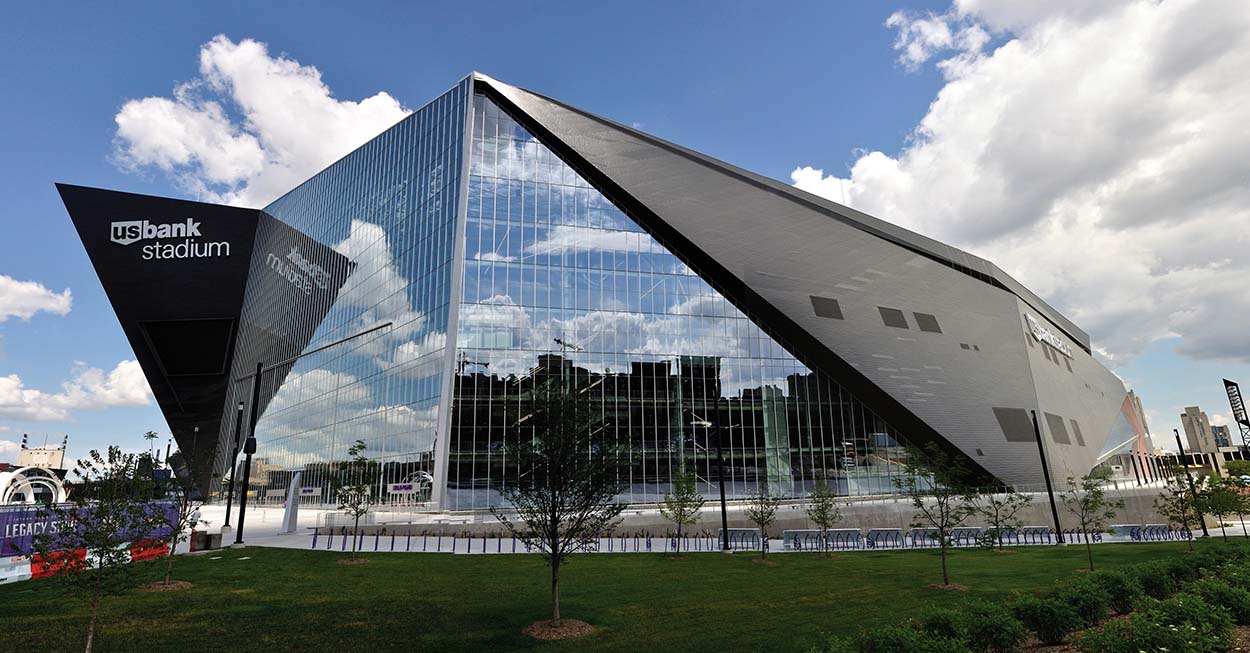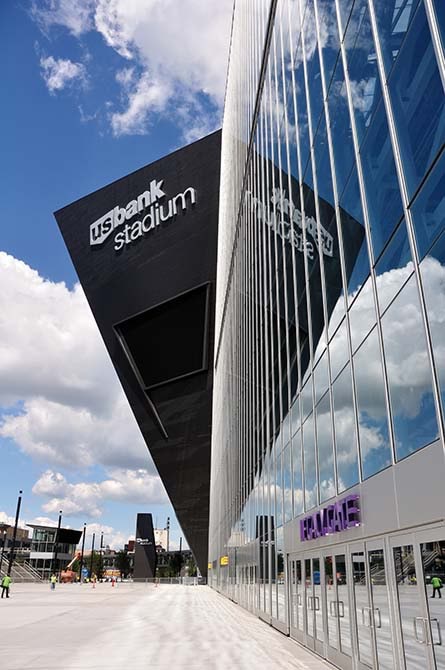
The U.S. Bank Stadium in Minneapolis
High-quality admixtures for precast concrete elements at the stadium home of the Minnesota Vikings.
In a recent press release, the Minnesota Vikings, the professional American football team based in Minneapolis (Minnesota, USA), congratulated Mortenson Construction, the main contractor appointed for renovation works, on completing the new U.S. Bank Stadium six weeks ahead of schedule
In a recent press release, the Minnesota Vikings, the professional American football team based in Minneapolis (Minnesota, USA), congratulated Mortenson Construction, the main contractor appointed for renovation works, on completing the new U.S. Bank Stadium six weeks ahead of schedule: “On June 17, Mortenson Construction symbolically handed the keys of the state-of-the-art venue to the Vikings and Minnesota Sports Facilities Authority (MSFA) to celebrate the substantial completion point of the over 162,500 million m2 U.S. Bank Stadium. Some details and cleanup remain, but the milestone for the largest public/private construction project in state history was reached six weeks before the deadline.”
“Today’s achievement is an incredible feat by HKS, Mortenson Construction, the MSFA and the Vikings, as well as the hundreds of subcontractors and thousands of Minnesota men and women who worked on this project over the last two and a half years,” said Vikings Owner/President Mark Wilf. “U.S. Bank Stadium was designed with the fan experience as the number one priority, and to accomplish this milestone ahead of schedule is a testament to the talent and dedication by so many.”
Wilf credited HKS architects for “designing a truly remarkable building through talent and ingenuity.” He said the execution of those ideas occurred via the skills and craftsmanship of 8,000 construction workers, including 1,300 at a time during the peak of the construction process.
The project, on which ground was broken before the final game at the old Metrodome stadium in December 2013, resulted from a collaboration led by General Superintendent Dave Mansell. Mansell began scheduling the building in his head in December 2012 and then led the process with use of a 4D computerized scheduling model.
People are surprised to learn that U.S. Bank Stadium has risen from the recycled rubble of the Hubert H. Humphrey Metrodome so quickly and that it is nearly twice the size of its predecessor.
The U.S. Bank Stadium can hold 65,400 fans when the Minnesota Vikings play their home games against other National Football League (NFL) football teams.
The first event hosted at the renovated stadium was a football game in which defending Premier League champions Chelsea and A.C. Milan faced off on August 3 as part of the 2016 International Champions Cup. The U.S. Bank Stadium was also the site of Super Bowl LII in 2018.
HIGH-PERFORMANCE ADMIXTURES FOR PRE-CAST CONCRETE STRUCTURES
Mapei/GRT, a U.S. subsidiary of the Mapei Group, supplies admixtures to Wells Concrete for use in strengthening and modifying concrete to jobsite requirements. Wells Concrete precast and erected a total of 5,096 pieces of concrete elements for the U.S. Bank Stadium. The pieces were delivered via 1,534 truckloads over the duration of the project. Approximately 11,435 m3 of concrete was required for the work, and 30,288 tons of precast concrete was poured and shipped from the concrete plant to the jobsite.
The concrete elements included, among other pieces, stands, stairs, structural beams and tunnel walls leading from the dressing rooms to the field.
The GRT admixture combination selected for this high-performance concrete mix design consisted of POLYCHEM VR air-entraining admixture, POLYCHEM SUPER SET non-chloride accelerating admixture, EVO 2500 super plasticizer and POLYCHEM VMA viscosity modifying admixture.
These products were used by the concrete suppliers in order to produce self-consolidating concrete with a consistent minimum compressive strength of 10,000 PSI (69 MPa) with a 0.31 ratio of water to cement (an internal and external specification for the concrete). Class A finishes were required on all the elements, and the consistent mix supported by GRT admixtures met all the construction specifications. Admixtures needed to be very stable, with consistent high flows, strength, air entraining and slumps/spreads over and over again. The GRT products were able to impart these qualities to the mix.
For further information see www.mapei.us and www.grtinc.com












